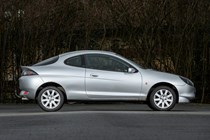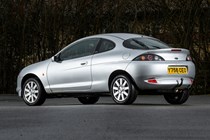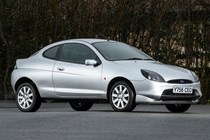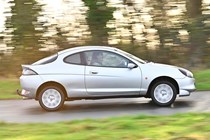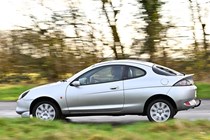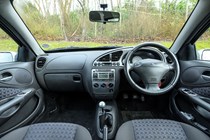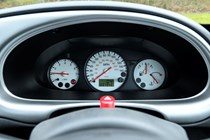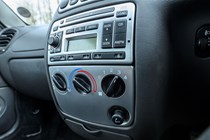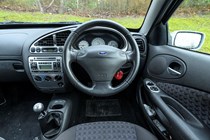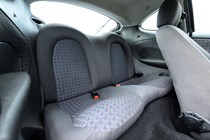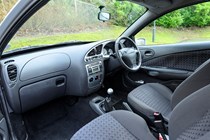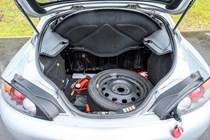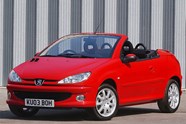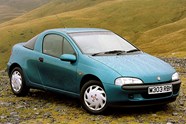Ford Puma (1997–2002) used car buying guide: Cheap thrills, sensible shoes
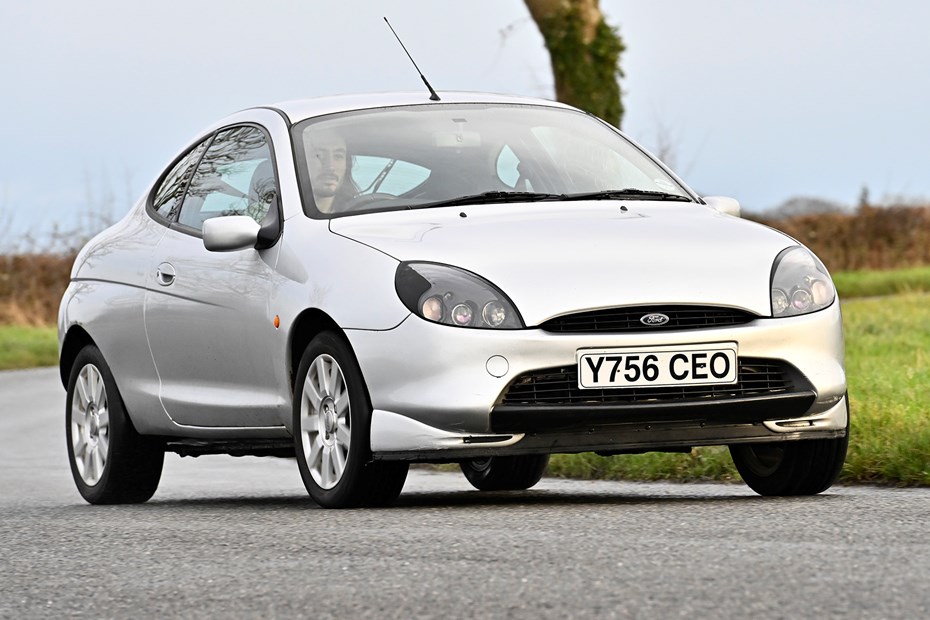
At a glance
| Price new | £12,140 - £22,845 |
|---|---|
| Road tax cost | £220 - £360 |
| Insurance group | 19 - 27 |
Get an insurance quote with

|
|
| Fuel economy | Not tested to latest standards |
| Range | 299 - 343 miles |
| Number of doors | 3 |
| View full specs for a specific version | |
Available fuel types
Petrol
Pros & cons
- Brilliant handling and fun-to-drive character
- Distinctive styling still looks sharp today
- Strong enthusiast following and rising classic appeal
- Rear wheelarch rust is widespread and costly to repair
- Limited practicality and cramped rear seats
- Many cars poorly modified or neglected in past ownership
Ford Puma (97-02) rivals
Overview
Built from 1997 to 2002, the Ford Puma was Ford’s bold, New Edge compact coupé based on the Mk4 Fiesta platform, and is emerging as one of the very best modern classics. It combined sharp styling, a responsive chassis and punchy performance into a lively small car that earned modern-classic status thanks to its fantastic handling and distinctive design.
Highlights included the Yamaha-developed 1.7-litre VCT engine, which produced 125hp and delivered a surprisingly quick 0-62mph time of around 9.2 seconds. It was mated to a slick-shifting five-speed manual gearbox and a chassis honed to deliver excellent balance and grip, especially on twisty B-roads. All this made the Puma a firm favourite among keen drivers.
Today, the Puma is widely recognised as one of the best driver’s cars Ford ever made. With sharp looks, decent practicality and rising classic appeal, it remains a rewarding and affordable used buy – so long as you avoid the rusty ones.
Ford Puma Coupe buying guide
The Puma’s charm lay in its simplicity, but age caught up with even the tidiest examples. Rust was the number one concern – the rear arches and sills were known weak spots, and rot could quickly take hold behind seemingly solid bodywork. Buyers were always advised to check closely around the wheelarches, sills, boot floor and under the plastic trims.
Ford Puma known faults and common problems
Common issues, and what to look for if you’re thinking of buying a Ford Puma (1997–2002)
1. RUST IN THE REAR ARCHES
The Puma’s most infamous fault, and we can’t repeat this point enough. Rear wheelarches often rotted from the inside out. Even smart-looking cars could hide bubbling or filler. Check underneath and behind the plastic liners.
2. CORRODED BRAKE LINES
Rusty brake pipes were a common MoT failure. Rear lines in particular could corrode where they ran along the floorpan.
3. 1.7 VCT ENGINE CARE
The Yamaha-designed 1.7-litre version required 5W-30 semi-synthetic oil due to its Nikasil bore coating, and it doesn’t bode well if you can’t see evidence of this in its maintenance files. Misfires, hesitations or oil smoke pointed to neglect and potential trouble.
4. ABS LIGHT WOES
ABS lights that stayed on typically meant failed sensors or wiring. Check that the light illuminates and then goes out at start-up. Generally an easy fix, but a pain to troubleshoot without decent diagnostic kit.
5. SUSPENSION FATIGUE
Tired dampers and bushes were common. Clonks or knocks usually pointed to worn rear shocks or top mounts.
6. SILL AND FLOORPAN ROT
Check inner sills, jacking points and the front floor area for rust. Fresh underseal might be hiding corrosion.
7. SAGGING AND WORN INTERIOR TRIM
Roof linings often sagged and plastics could look tired. Electrical bits like window switches or heater fans might also be temperamental.
8. AFTERMARKET ISSUES
Avoid poorly modified examples with loud exhausts, lowered springs or dubious air filters. Stick to original or tastefully upgraded cars. These are less common today, but not exactly unknown.
9. RACING PUMA PARTS SCARCITY
The Tickford-assembled Racing Pumas were rare and desirable, but replacement parts were expensive and difficult to find. Buy one only if you’re committed – and be prepared to pay through the nose.
10. CLUTCH AND GEARBOX HEALTH
The gearbox was generally strong, but worn synchros could cause second-gear crunching. A slipping clutch or high bite point could mean a replacement was due.
What models and trims can you buy?
The Puma range was refreshingly simple, based on a single body style and front-wheel-drive layout. All models came with a five-speed manual gearbox and the same engaging chassis, tuned for sharp responses and superb balance.
The 1.4-litre entry-level model produced 90hp and was best suited to urban driving or insurance-conscious buyers. The 1.6, introduced later in the model’s life, upped power to 103hp and felt noticeably more flexible, making it the better everyday choice.
The real star of the range was the 1.7-litre VCT. With 125hp and a rev-happy character, it delivered lively performance and became the definitive Puma experience. It came as standard with uprated suspension, close-ratio gearing, and disc brakes all round.
Sitting above the standard cars was the Ford Racing Puma, a special limited-run model developed by Tickford. It featured wider track suspension, Alcon four-pot front brakes, unique bodywork, Sparco bucket seats and a 155hp version of the 1.7-litre engine. Just 500 were built, all painted Imperial Blue, and they now command a significant premium on the used market.
Trim levels were basic by modern standards, but even early cars had power steering, alloy wheels and sports seats. Later models included special editions like the Millennium Edition (bright yellow with leather/alcantara trim), the Black Edition, and the final Thunder Edition, which came with half-leather seats, multispoke alloy wheels and extra interior trim upgrades.
We bought a Ford Puma Coupe

See how our £1,500 eBay Ford Puma performed against two other affordable modern classics.
Over the next few pages, we’ll review each aspect of the Ford Puma, taking into account its practicality, comfort, fuel economy and performance. If you’re short on time, you can also skip to our verdict page to see if we recommend the Puma as a good used car.



